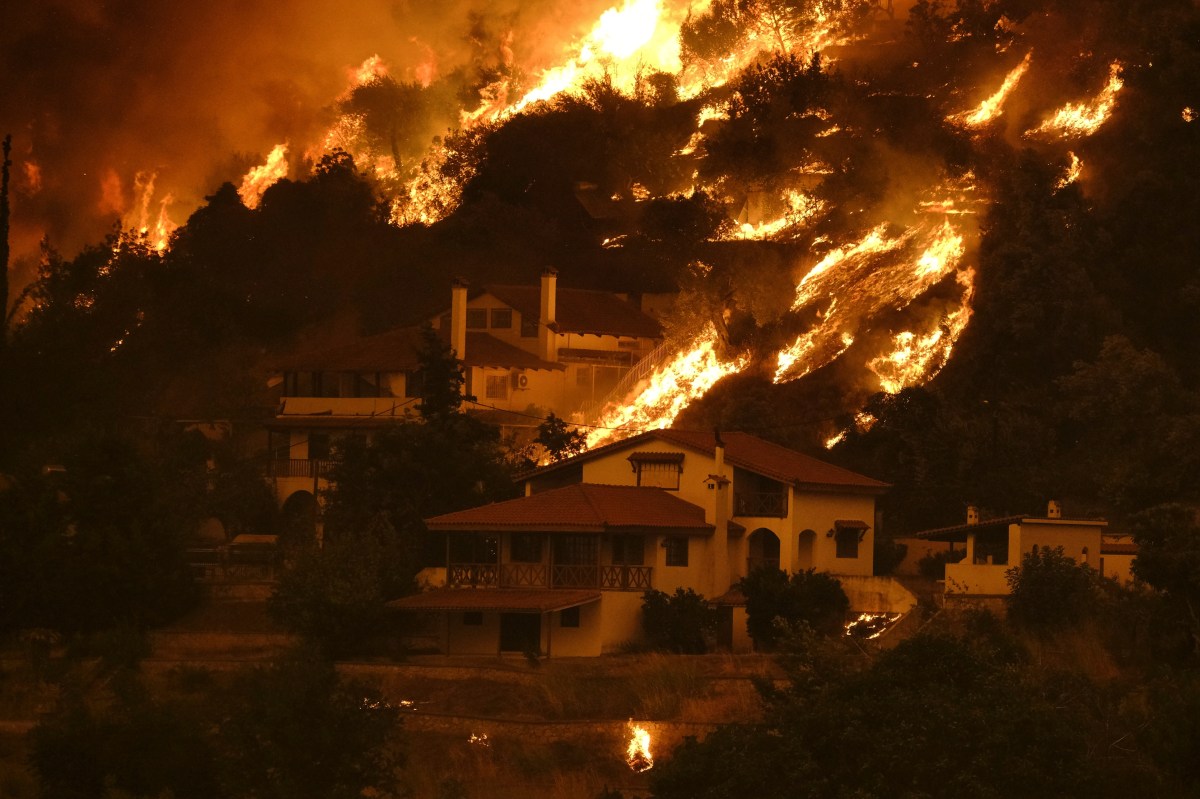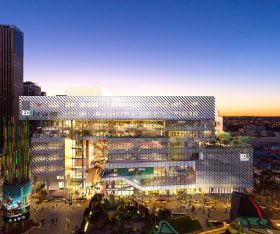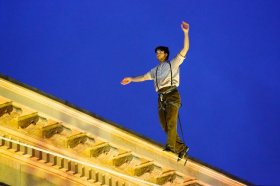A couple of weeks ago, I was standing on the balcony of an Athens hotel on the first night of my isolation after contracting COVID19 at a film conference in Norway. I was mesmerised by the sight of a mountain ridge burning out of control barely 10 kilometres away. Stuck in the middle of the defining crises of our time, a global pandemic and the climate emergency, I understood this wouldn’t be the last time I’d experience this existential compression. Far from it, this experience is becoming more common, and for those living on the frontlines, particularly First Nations communities, it has been reality for years now. Contemplating all this from a hotel balcony, I felt my privilege more than ever.
During the conference, Jason Ryle from Toronto International Film Festival quoted his colleague, Samuel Rubin of Hollywood Climate Summit, ‘If you’re not addressing climate change in your work, you’re making science fiction.’ Staring at those fires, the phrase stuck like an earworm in my head and, failing to extract it, I’ve decided to leave it there and let it act as a spirit guide for the future. It applies to all of us, and especially those working in the arts, where it is still possible to exercise our imagination without the fear that we will be called out for being dangerous or boring or, worse still, unprofitable. Today, the only certainty is change, and never more so is that true than for our climate.
While overseas, the Arts Agency Formerly Known as The Australia Council for the Arts certainly changed, reconstituting itself as Creative Australia. Such moves can be positive and energise an organisation, re-setting its mission statement, objectives and corporate strategies. Sometimes this works incredibly well and other times, as in the case of Twitter’s rebranding as X, it does not. For Creative Australia, it is an opportunity to put poor past behaviours to bed and create a progressive, meaningful identity. Given the significance of the institution and our need for genuine leadership, it is important to give the benefit of doubt and extend goodwill.
It is also our responsibility to challenge the new entity to acknowledge its priorities and act upon them. Creative Australia has an opportunity to get on the front foot with respect to the climate emergency and lead the arts and cultural sectors in becoming part of the solution.
The best leadership sets the agenda by example. As proposed in a previous ArtsHub article, the agency needs to undertake an internal audit of its operations and use to understand and reduce its carbon and energy footprint. In the process it will generate institutional intelligence and knowledge it can use to prosecute the greening of the sector. Creative Australia can use these learnings to develop green templates that can then be attached to all funding agreements with the national organisations with which it partners and make relevant KPIs a condition of ongoing funding.
For this undertaking, there is plenty of knowledge already in the independent and small sector. It is here that the significant work in activism and artistic development in relation to the climate emergency has been done, and where Creative Australia should turn its immediate attention by establishing a Creative Climate Fund that primarily and directly funds artists to make work in the space.
A serious offer to the sector would see the establishment of a Creative Climate Fund with a starting annual budget of $5 million with an increase of 50% per year over thee years followed by sustained funding at that level over the long term. There is an urgency to the matter.
The Creative Climate Fund needs to be protected by important conditions:
- The Fund needs to provide direct funding for artistic projects and strategic initiatives.
- The Fund must, as a priority, support First Nations artists to undertake projects that support the aspirations of their communities, specifically in relation to custodial obligations to Country. Such emphasis will ensure reciprocal benefit and intergenerational learning opportunities integral to maintaining and empowering knowledge systems and their application. This culturally grounded approach should be underpinned and supported by well-resourced First Nations-led advisory groups to provide leadership and pedagogical approaches in the grant-making process.
- The Fund needs to be created with new money, directly requested from government, not drawing on existing funding categories nor from discretionary agency funds.
- The Fund needs to provide majority funding directly to independent artists and cultural operators (and not presenting institutions, which would slow down the creation of the work and soak up funding). Presenting organisations need to be encouraged to pivot their programming to climate-oriented artwork and pay for the delivery of such new works out of existing budgets.
- The Fund needs to operate across disciplines and prioritise interdisciplinary works as, historically in this space, this provides the highest level of cut-through for the sector.
This is just a skeleton for a new Creative Climate Fund with the purpose of articulating key values: First Nations centrality and self-determination, artist-led and focused, interdisciplinarity, funding stability and longevity, and acknowledgement of the sector’s historical work.
There are impediments to such direct action. According to the recent Bad Romance Report, 16.5% of a significant sample of Australian arts companies and institutions receive sponsorship from coal, gas and oil companies. Western Australia and Northern Territory comprise the majority of these sponsorships, which corresponds to the significant uptick in activism by local cultural operators such as Dirsupt Burrup Hub and Fossil Free Arts NT. Green washing is in hyper-drive, but so is pushback from arts activists and organisers. There remains the significant matter of representation by extractive industries on the boards of arts and cultural institutions that can have a chilling effect on both programming content and on open discussion around support for climate-centred artistic works. Compared to the immense and immersive climate crisis, these are matters that must be navigated courageously and expeditiously.
If Creative Australia can embark on its journey with attention to the climate emergency as a key platform, then its relevance and significance will be swiftly hardwired into the future. And that will sustain all of us. It’s not science fiction.





